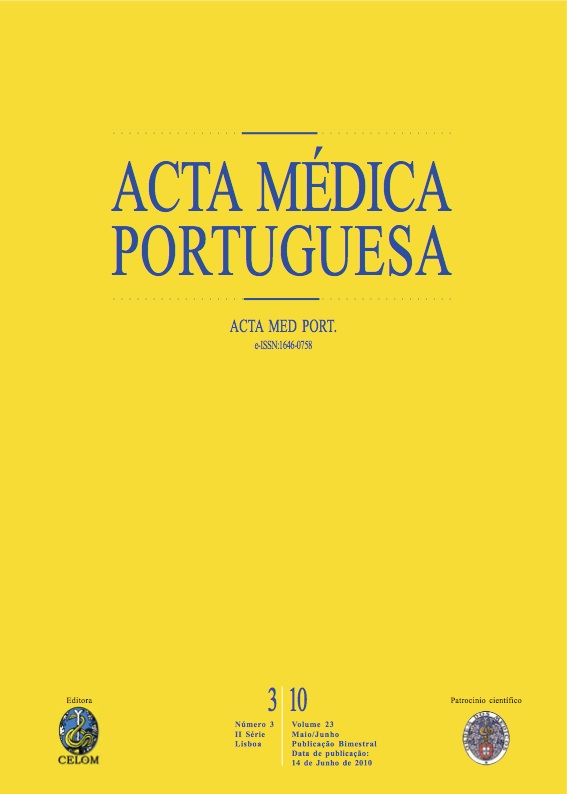Childhood obesity.
DOI:
https://doi.org/10.20344/amp.643Abstract
Childhood obesity, due to the exponential increase of this chronic disease, is now considered a XXI century epidemic disease. Portugal, the sixth European country where this disease is more prevalent, expends 3,5% of the annual health budget with this pathology.Characterization of the obese children followed in the pediatric outpatient clinic.A twelve year cohort study who comprehended 482 kids, analysing demographic variables; family and social backgrounds; personal backgrounds; habits; body mass index (BMI); comorbidities; blood tests; clinical intervention and follow-up.A positive family history with, at least, two obese elements was found in 64%, of the 246 boys (51%) and 236 girls (49%) analysed. We observed a 93% rate of eutocic delivery for an average birth weight of 3585 gr. These children were exclusively breastfeed for, at least, four months, in 38% of the cases. In our sample, we found an average of three meals per day, with an 81% rate of take-way. The absence of a regular physical activity plan was observed in 89% of the sample. Anthropometric evaluation and counselling about healthy habits were focused through all appointments. For a follow-up of 16 months (+/- 7 months), a 10% success rate was obtained, with an 1,22 BMI reduction. We verified a 20% dismissed rate, averagely occurring in the first 12 months (+/- 3 months).On the whole, the characterization of our sample seems to be according to the children obesity literature. Trough out follow-up, commitment to the interventional schedule was critical for life-style modification and desirable BMI achievement. Regular appointments and periodic evaluation of the results seems to be reliable strategies in the fight of this epidemic disease.Downloads
Downloads
How to Cite
Issue
Section
License
All the articles published in the AMP are open access and comply with the requirements of funding agencies or academic institutions. The AMP is governed by the terms of the Creative Commons ‘Attribution – Non-Commercial Use - (CC-BY-NC)’ license, regarding the use by third parties.
It is the author’s responsibility to obtain approval for the reproduction of figures, tables, etc. from other publications.
Upon acceptance of an article for publication, the authors will be asked to complete the ICMJE “Copyright Liability and Copyright Sharing Statement “(http://www.actamedicaportuguesa.com/info/AMP-NormasPublicacao.pdf) and the “Declaration of Potential Conflicts of Interest” (http:// www.icmje.org/conflicts-of-interest). An e-mail will be sent to the corresponding author to acknowledge receipt of the manuscript.
After publication, the authors are authorised to make their articles available in repositories of their institutions of origin, as long as they always mention where they were published and according to the Creative Commons license.









